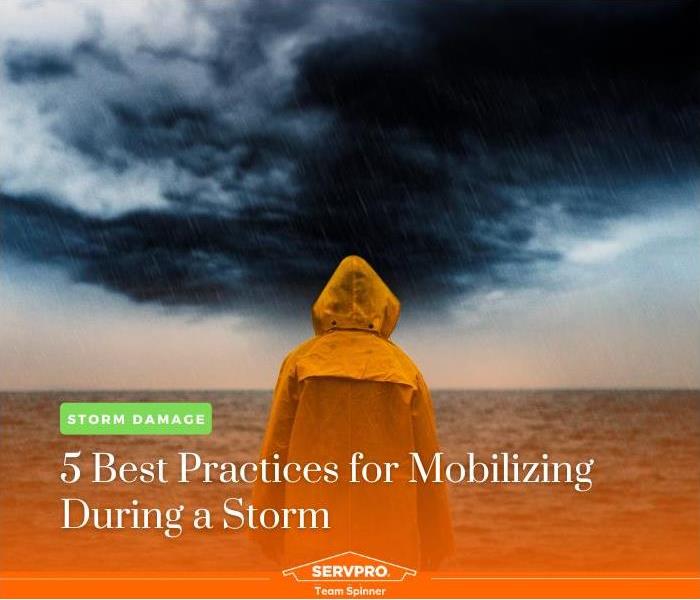5 Best Practices for Mobilizing During a Storm
5/3/2024 (Permalink)
As a leader in disaster recovery and mitigation, SERVPRO Team Spinner understands the importance of preparation and readiness when it comes to severe weather events. Whether it's a hurricane, tornado, or severe thunderstorm, mobilizing effectively can make all the difference in ensuring the safety of yourself, your loved ones, and your property. In this blog post, we'll share five best practices for mobilizing during a storm, along with a call to action to encourage proactive preparedness.
1. Stay Informed: Keeping informed about weather forecasts and updates is essential for making informed decisions during a storm. Use reliable sources of information such as NOAA Weather Radio, weather apps, or local news outlets to stay abreast of changing weather conditions and potential risks.
2. Prepare an Emergency Kit: Assemble an emergency kit containing essential supplies such as non-perishable food, water, flashlights, batteries, first aid supplies, medications, and important documents. Make sure your kit is easily accessible and includes enough provisions to sustain you and your family for at least 72 hours.
3. Secure Your Property: Take proactive measures to secure your home and property against potential damage. Reinforce doors and windows, trim trees and shrubs, and secure outdoor furniture and equipment. Consider installing storm shutters or boarding up windows to protect against high winds and flying debris.
4. Have a Communication Plan: Establish a communication plan with family members, neighbors, and loved ones. Designate a point of contact outside the affected area who can serve as a central coordinator for communication and information sharing. Ensure that everyone knows how to reach each other in case of separation or evacuation.
5. Follow Evacuation Orders: Heed evacuation orders issued by local authorities. If instructed to evacuate, do so immediately and follow designated evacuation routes to safety. Take only essential items with you and leave early to avoid traffic congestion and hazardous conditions.
Don't wait until the next storm is on the horizon to prepare. Take action now to ensure that you and your loved ones are ready to weather any storm that comes your way. Browse our website for more information on storm preparedness and to learn how our team can help you recover and rebuild in the aftermath of a severe weather event. Together, we can weather the storm and emerge stronger on the other side.






 24/7 Emergency Service
24/7 Emergency Service